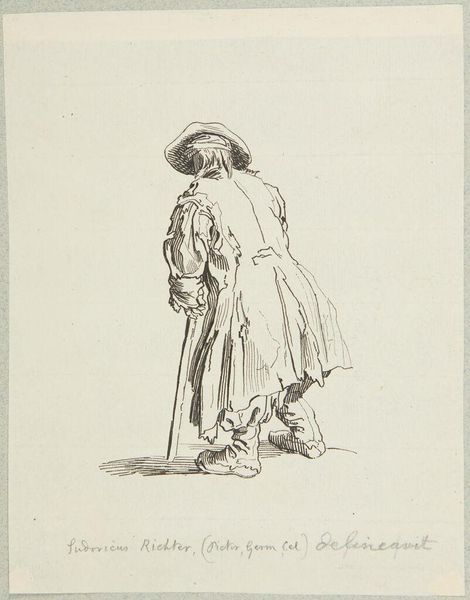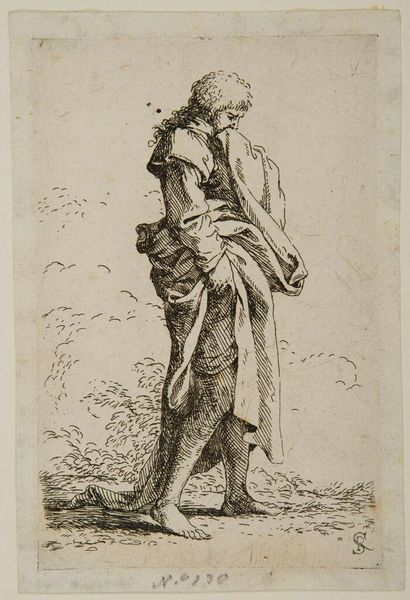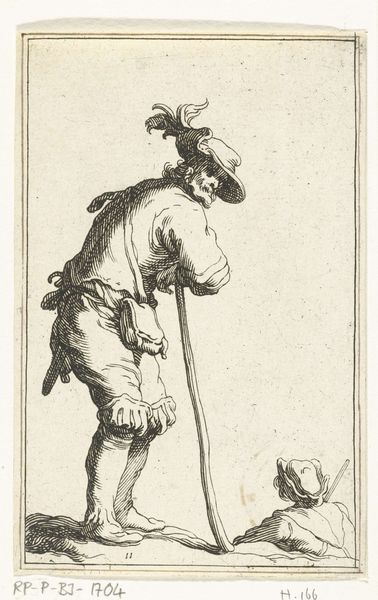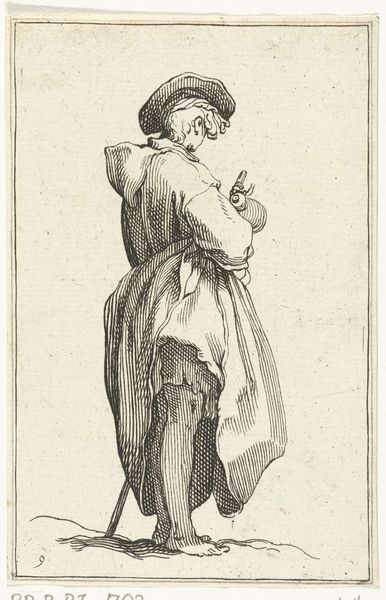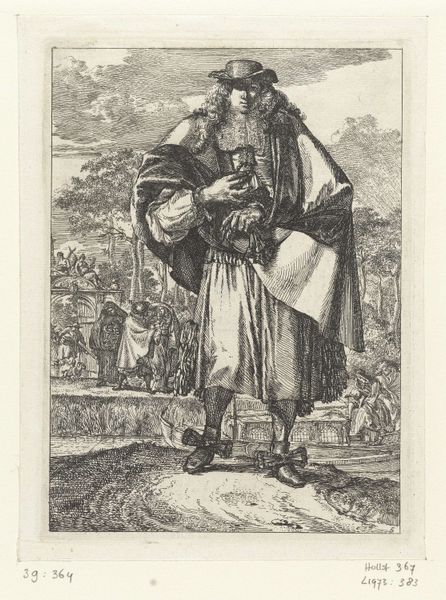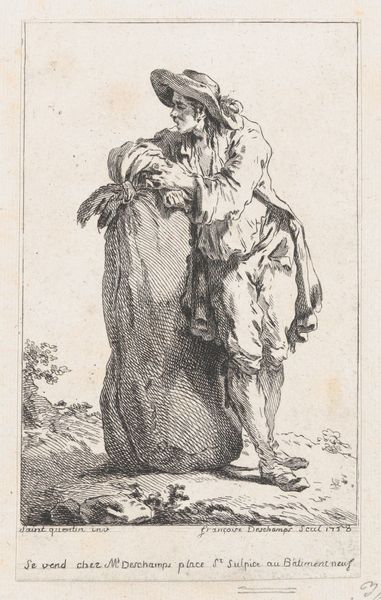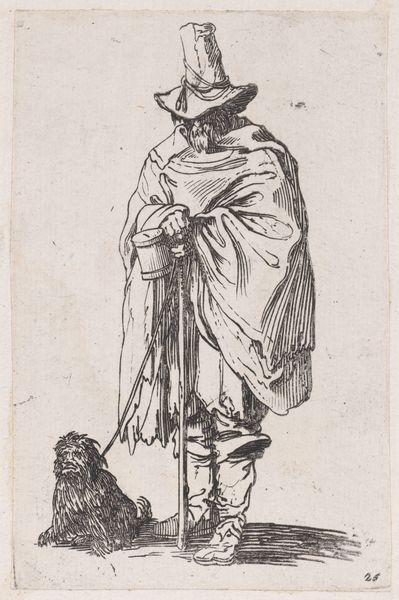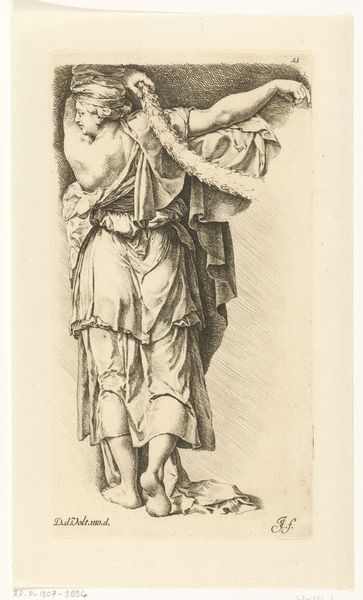
print, etching, engraving
#
portrait
#
narrative-art
#
baroque
#
dutch-golden-age
# print
#
etching
#
figuration
#
line
#
genre-painting
#
engraving
Dimensions: height 120 mm, width 80 mm
Copyright: Rijks Museum: Open Domain
Frederick Bloemaert's etching presents us with an old beggar and a young boy, a common sight of 17th-century Dutch society. The symbols of poverty are clear: the beggar’s tattered clothes, the alms bowl hanging from his waist, and the walking stick to help his weary steps. But let us consider the staff. Throughout history, the staff appears as a symbol of authority, guidance, and support. Think of Moses's staff parting the Red Sea, or the shepherd's crook, representing care and leadership. Here, the staff supports the beggar’s physical frailty, but also hints at a lost dignity, a past where he might have held a position of respect. The image evokes a deep-seated psychological response. We are confronted with the vulnerability of human existence, the fleeting nature of fortune. The contrast between the old man and the young boy, who could mirror the beggar in the future, emphasizes the cyclical nature of life and the ever-present possibility of decline. This speaks to our collective fear of aging, of losing control, and our subconscious awareness of our own mortality. These symbols are continuously progressing, evolving, and taking on new meanings across history.
Comments
No comments
Be the first to comment and join the conversation on the ultimate creative platform.
